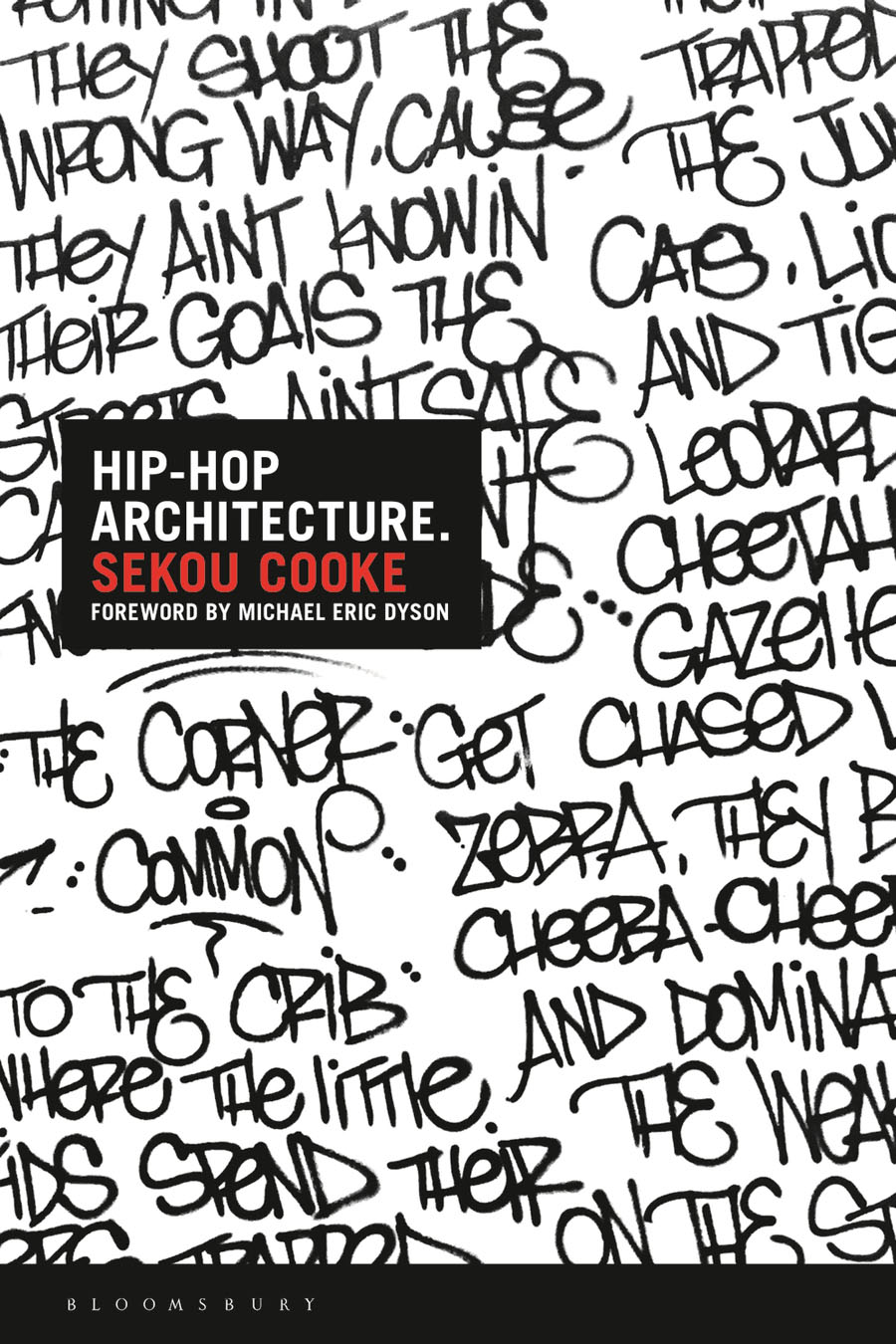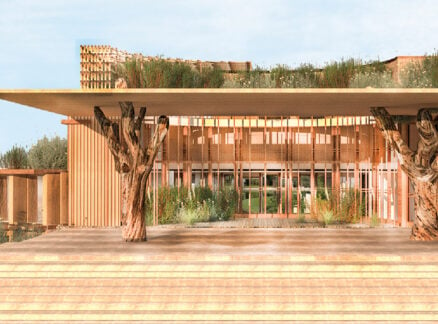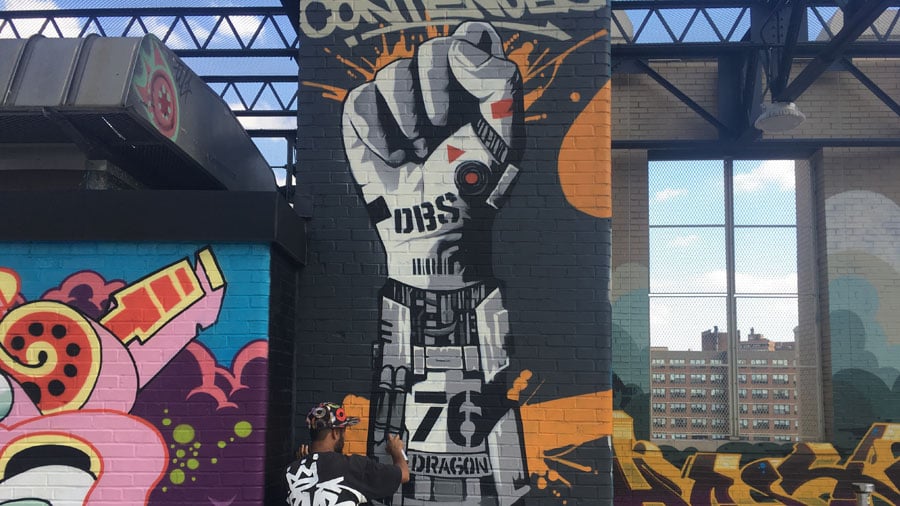
March 4, 2021
Q&A: The Blueprint for Hip-Hop Architecture
With the publication of his new book Hip-Hop Architecture, architect and Syracuse University professor Sekou Cooke cements the legitimacy of a proactive design concept.
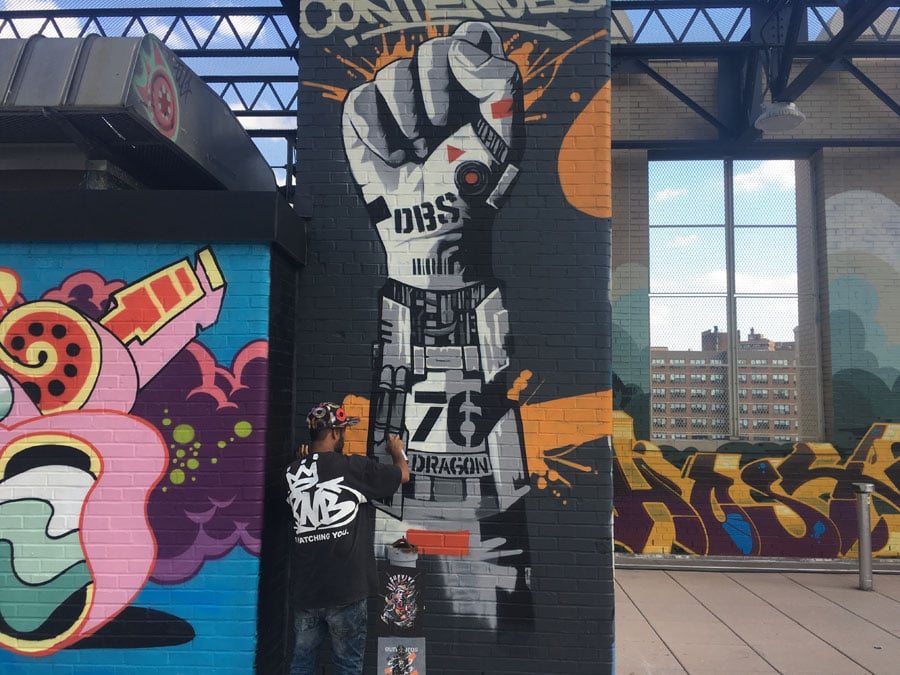
In the 1990s, as hip-hop took over MTV, radio, art, and fashion, architecture and design students looked at the built environment and wondered how their own industry overlapped with the genre. Is it possible to build in a hip-hop style? The fusty white dudes of the architecture establishment dismissed their ideas, so the nascent hip-hop architecture went underground and Black and brown architects, artists, and academics started trading research and ideas like mixtapes.
Two decades later, architect Sekou Cooke became the unlikely force pushing hip-hop architecture into the mainstream. He thought his 2014 essay “The Fifth Pillar: A Case for Hip-Hop Architecture,” published by the Harvard Journal of African American Planning, would be his first and last word on the subject. But then Craig Wilkins, a hip-hop architecture originator, reached out with new information and fresh avenues of investigation, which spawned “Towards a Hip-Hop Architecture,” a 2015 symposium at Syracuse University where Cooke is an assistant professor. That generated New York’s Center For Architecture’s 2018 exhibition Close to the Edge: The Birth of Hip-Hop Architecture. It was the concept’s highest-profile stage yet and, again, Cooke was inundated with material that solidified hip-hop architecture’s place in the architectural firmament.
Its legitimacy is finally cemented with Cooke’s aptly titled book Hip-Hop Architecture (Bloomsbury), which will be published on April 22. Equal parts history, field guide, conversation, and manifesto, the richly illustrated volume is not your architecture professor’s textbook. It opens with a challenge: “This book is not for you. It is not for architectural elites.” It’s the book hip-hop architecture deserves—and the one our era of reckoning demands.
Cooke spoke with Metropolis about Hip-Hop Architecture, its place in the broader conversation about race in the profession (and America), and where it—and he—goes from here.
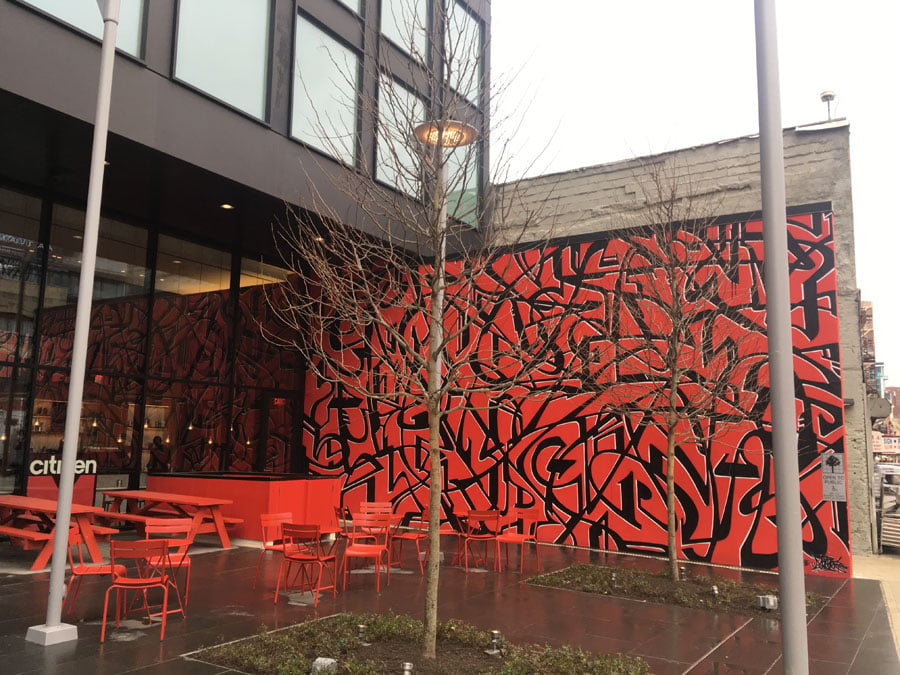
Why didn’t hip-hop architecture catch on in the mid-1990s, when there was this real movement that impacted every area of culture?
There were many people in the ’90s who were students and started to grow up and go out into the world and have practices. Some of them got beat down by the realities of architecture as a practice, some went into the art world, some decided to keep moving and develop this thing, and some became academics and really wanted to approach it from an academic standpoint. Some of these ideas are embedded within that work, but it wasn’t something they proposed as a larger movement. When I came to the topic, I recognized that it needed a curator, and this is how I primarily see myself in the space. For me, that means someone who is going to identify people who are doing this work as broadly and as deeply as they’re doing it and pull it together under an intellectual umbrella that people can then build off of.
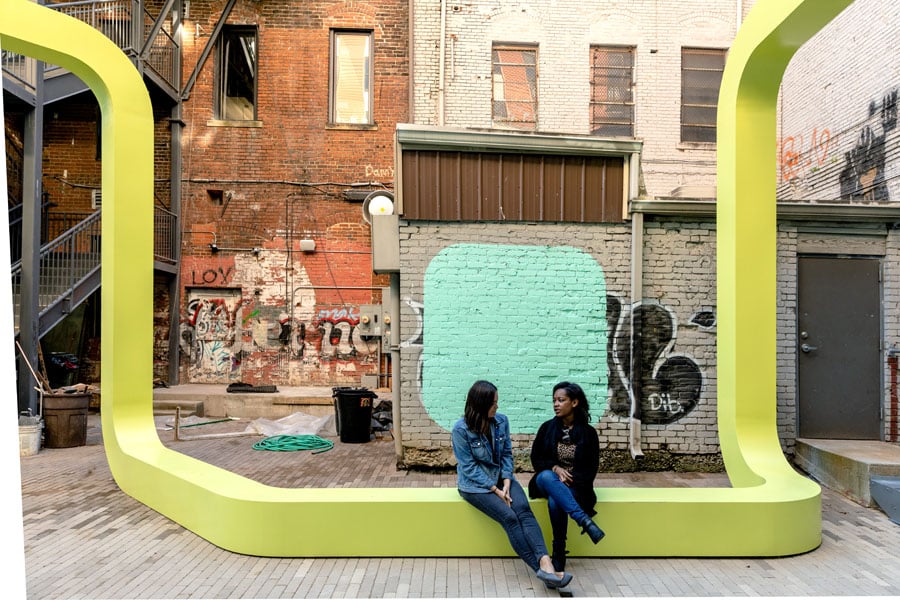
Putting it that way helps frame this push and pull in the book between activism and criticism. You’re putting this forward but also saying, “The architectural world is kind of screwed up.”
Architects tend to be self-congratulatory. We all really love everything we do; we think it’s the best thing in the world, and we think everybody else in the world should respect and love what we do. The problem is the world doesn’t even know what the hell we do. They don’t understand the way that we think or talk about it, and the more we talk to each other and the more coded and convoluted our conversations and language become, that language becomes virtually impenetrable from the outside. Architects criticizing architecture as a discipline or practice or profession exists, but not to the level where they’re willing to completely cut the legs from under what props it up. And to me, what really props up what architecture is, is fundamentally white, male, and affluent.

You write about your experience presenting hip-hop architecture as a research subject and being told by authority figures, “Don’t do it. This isn’t serious.” This book feels like your way of giving underrepresented architects the agency to say, “no, actually, we have permission to do this.”
That gets at the whole heart of it—the powerful potential I see for this future and for people who 25 years ago might’ve failed at architecture school because what they were interested in was invalid and not academic. This is a tool for them to say, “This is not just a singular piece of research. It’s a nexus-point for a whole series of ideas and scholarship resources that have been really thoroughly done.” The bibliography is really deep and vast, the voices and work are really broad and diverse, and anybody who comes at somebody for not doing capital-A architecture in a studio can just throw that in their face and expose them for being just as ignorant as they might’ve been 30 years ago.
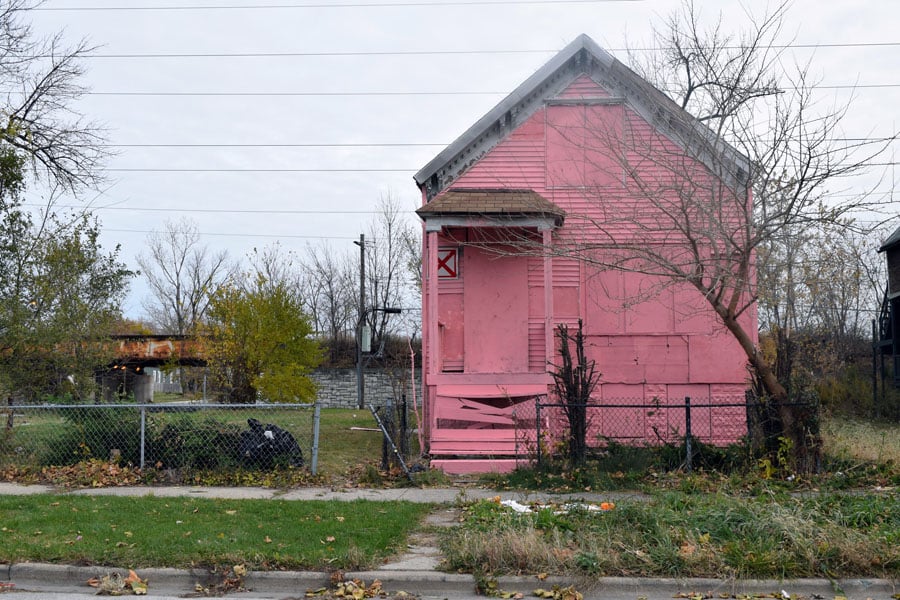
Has the critical part of your role as hip-hop architecture’s curator changed or become more urgent since the murders of George Floyd and Breonna Taylor and the activism that came from it?
The urgency has always been there. It hits you the moment you enter architecture school and look around and try to find people who look like you and you don’t see that. At Cornell in the ’90s, we were really lucky to see a few faces that looked like us, but we were still very conscious of looking at our educators, at the curricula we were taught, and at what was valued in the studio and in our other classes and waking up to the fact that this shit just isn’t okay. None of this has anything to do with us, who we are, or what we do. We all had this sense of urgency to express our individual identity within our work.
So the urgency we’re feeling now, or have felt since this past summer, is not really new to us. It was really architecture calling itself to reckon and saying, “All these atrocities and injustices don’t happen only outside of our profession. It’s actually rampant inside of our profession and inside of our institutions and inside of our academic halls.” The rest of us who had always felt that urgency, we’re like, “Oh, wow, they’re finally waking up to this. Let’s see how long this lasts.”
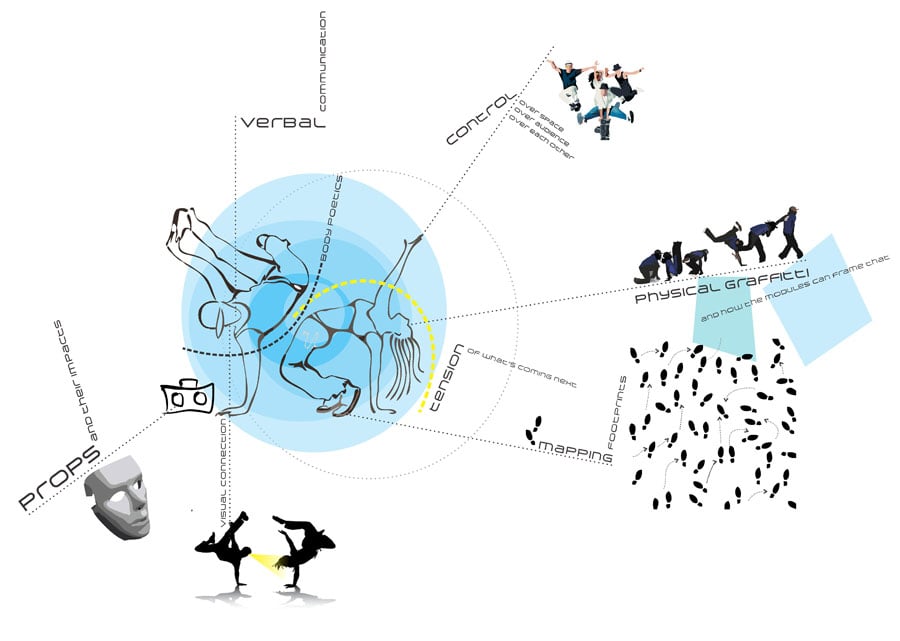
That leads to this question of cultural appropriation, What does it look like when we’re talking about this concept?
I think it’s as nuanced as white rappers. There’s a gradient that goes from Vanilla Ice to Eminem. Macklemore’s somewhere in the middle and God knows where Iggy Azalea fits on that spectrum. But if you noticed in the book, I stopped short of putting a finger on any individual work and saying, “This is hip-hop architecture.” And I definitely don’t put my finger on something and say, “This is not hip-hop architecture.” It’s more so asking: What does this add to the conversation? How do we account for some of these younger practitioners who may be white but definitely grew up within the time period when hip-hop was a dominant force in their upbringing and who are producing work that is just as layered or influenced by graffiti or by hip-hop break beats as any Black person in these examples? There isn’t a hard racial line, a hard acceptance line, in the works I’m showing. Some of the work I find the most interesting or compelling are by people who would never, in any public forum, identify themselves as being part of hip-hop culture.
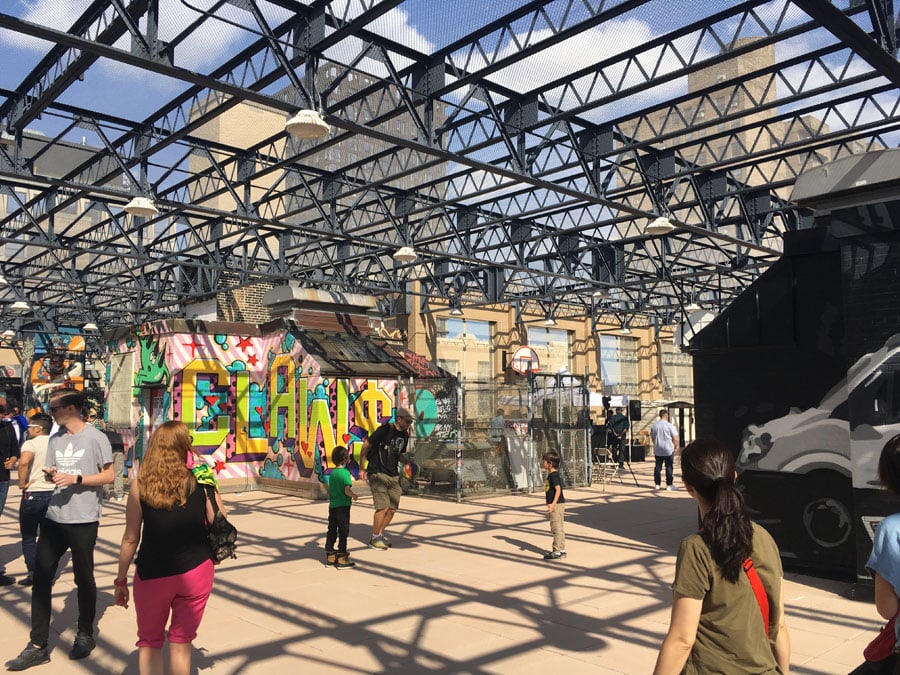
That’s a point you seem to reach when you grapple with how to define hip-hop architecture.
Labeling is the first tool of appropriation. If you can label something, then you can appropriate it. If you know what the rules are and if you know what the checklist is, then all you have to do is follow those rules or establish those checklists without understanding the real guts of the thing. If you’re losing the soul of the thing, then it doesn’t count at all. The closest thing to a definition I get to in the book is where Harry Allen talks about there being a super force at the center of all things hip-hop. What makes the thing that these people are doing hip-hop? Emceeing and spray painting have become attached to each other, but they’re very different actions and they’re very different aesthetically. But they share a common DNA, and at the center is this super force. It’s something that’s so intangible, so ephemeral that we can’t really put our fingers on it, but when it shows up and when we see it, we know it. There’s a saying in the hip-hop world: real recognize real. A real, true, authentic hip-hop product can recognize something else that has that same DNA.

The book feels like both a capstone and a jumping-off point. Where does hip-hop architecture go from here? Where does its curator?
I think it’s a capstone for me and more of a jumping-off point for everyone else. Anyone else who has worked on this, has been interested in this, or who will become interested in this, can use the book as a starting point, as a resource to build new arguments on, to critique and criticize, to poke holes into, and build from it. Hopefully, it’ll be something that’ll be a kind of benchmark for a time period and people can continue to refer back to it.
There is work that’s connected to this that I want to build on with two areas. The first is technology and really testing my own work included in the book, like the 3D Turntables project. I want to continue to build on some of that and work with robots and 3D printers on larger-scale work. I’m hoping that I’ll get a chance to work with Rael San Fratello and some of the work they’re doing out on the West Coast. The other area of research that’s big for me is urban design. I think that is one of the most powerful realms of this way of thinking—understanding who public housing projects, public spaces, and streetscapes are for. Black men have been killed in the street because they have dared defy the rules of engagement or the rules of occupying public spaces. That’s an area that I feel strongly about and that I feel like I’m going to continue developing.
You may also enjoy “Comment: Architects Didn’t Invent Redlining, But We Helped Reinforce It—On Two Continents”
Would you like to comment on this article? Send your thoughts to: [email protected]
Register here for Metropolis’s Think Tank Thursdays and hear what leading firms across North America are thinking and working on today.









